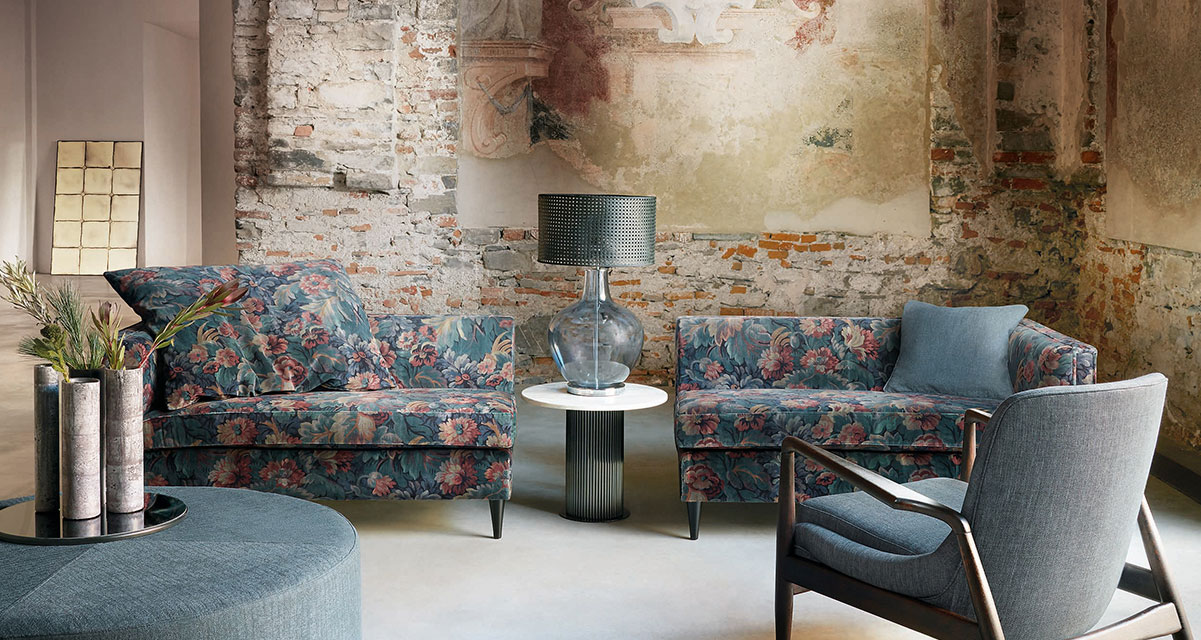THE POWER OF HANDS
At The Pure Concept Home, we constantly believe in celebrating our country’s diverse cultural heritage and crafts. As a home and design studio, we have always taken immense pride in India’s rich textile crafts and traditions, taking inspiration from their art and techniques in our collections over the years. However, due to modernisation and development in contemporary techniques, Indian handicrafts have been gradually disappearing over time and, this month, we created a platform to shine a light on traditional techniques being used on our minimal soft furnishings with an exhibition called The Power of Hands.
Inspired by plant and animal cellular structures, each technique showcased at the exhibition explored the complex forms of nature to highlight the intricate power of handmade materials, to create fabrics with 3D surfaces that can be used in several ways across the home—from draping your interiors to being framed as a piece of art.
With a constant fascination and appreciation for the fine and unique details in crafts indigenous to our country, our founder Chanya Kaur chose to promote Indian craftsmanship by echoing how it can be used in contemporary spaces by being versatile enough to not just represent ethnicity but also blend with pieces around it, thereby also staying timeless. With The Power of Hands, we explored diverse forms of handcrafted artistry, and touched upon how they may have transcended geographical boundaries to influence similar traditions around the world.
“As a designer, I feel there’s so much talent and so many resources that already exist in our country, which made Indian handcrafted weaves the best starting point for this exhibition. We sourced materials from artisans across India and in turn discovered that there’s always space for something new to be created—a sentiment we constantly live by at The Pure Concept Home. Over the years, everything has moved towards industrialisation and mass production, and in the process we have lost any form of authenticity. The imperfections of hand-made crafts and weaves is very important, as it makes a piece stand out and adds to it’s uniqueness,” says Kaur.
In tune with paying homage to all things handcrafted, we curated a series of conceptual in-store experiences to highlight the following techniques:
Technique 1: Our revivalist take on traditional wicker-weaving, with modern-minimalist rattan artistry
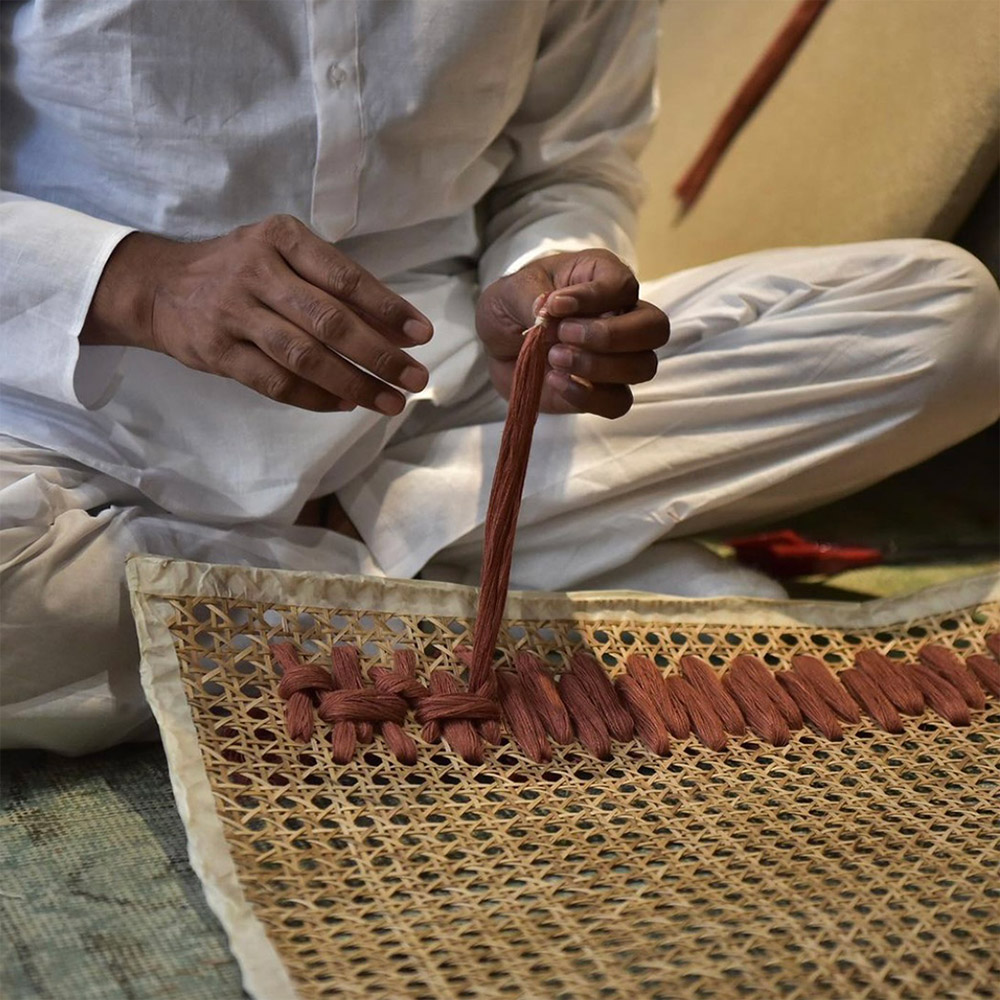
The cane used is sourced locally, from artisans working out of Mumbai’s by-lanes. Instead of opting for the conventional cross-stitch technique, we reimagined an open-weave style. This offered options for alternate interlacing of the yarn to create a variety of clever patterns. Rattan is usually associated with Indian mid-century styles. For us, the inspirational association is with ancestral homes, old gymkhanas, and quaint libraries; where we were most likely to stumble upon classic cane chairs and vintage wicker armoires. The reminiscence of simpler days gone by has been translated onto simple, clean, functional silhouettes for accent furniture, refreshing textural options for wall coverings and for wood-framed wall art. These rattan weaves do not try too hard to be inviting. They stand out, which makes them unique statement pieces.
Technique 2: Using handloom-woven fabric, with hand-embroidery
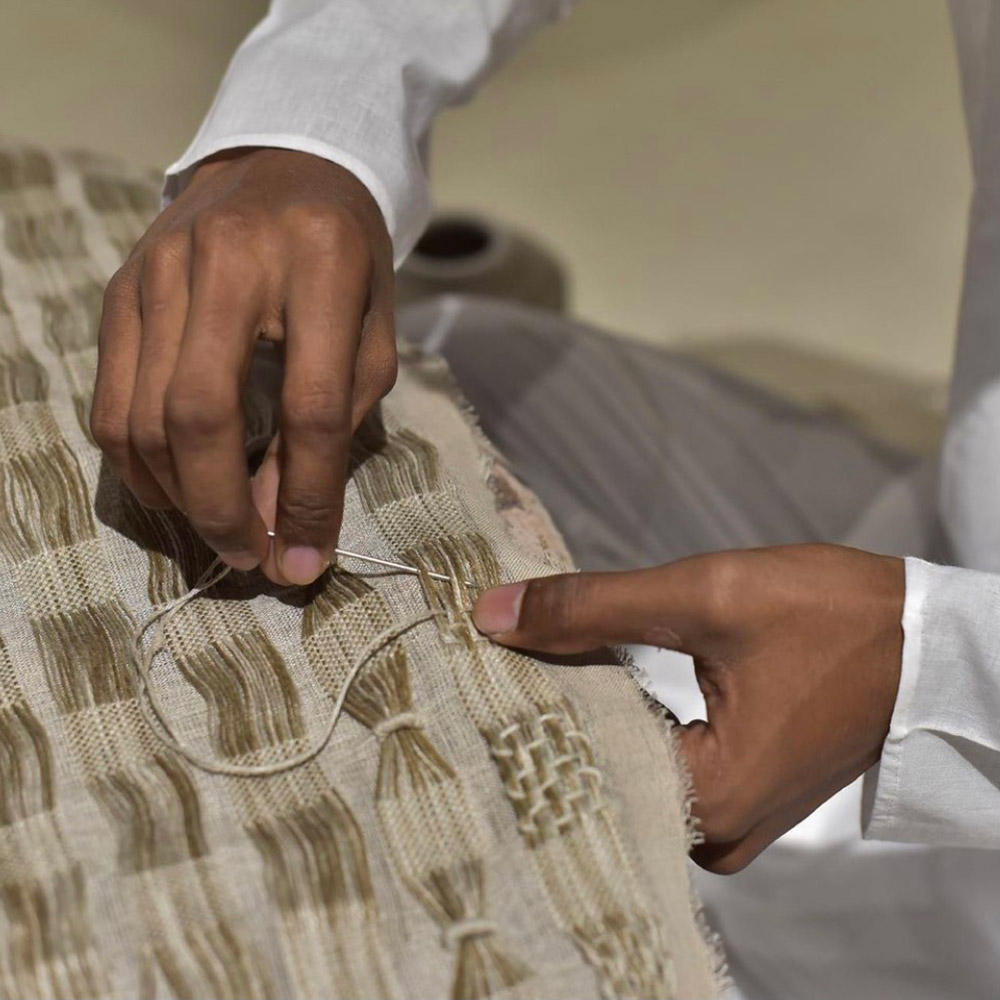
With this particular technique, an extra warp has been added to the weaving of the fabric, resulting in a 3D surface texture effect. During the course of handloom weaving, this extra warp was tied together using a simple stitch at regular intervals. It helped enhance the final, even-textured finesse of the fabric. To strengthen the effect of the extra warp itself, the base was woven in a plain weave, or simple twill, and then the complete design detailing was done by hand on the warp. We employed our hand-stitching techniques—knots and running stitches in white thread—to give the alternating warp and weft characteristically neat and precise elegance. The final product is thus a perfect fit for minimalism that is the overarching aesthetic in most contemporary homes.
Technique 3: Showcasing a charming hand-stitched crisscross pattern
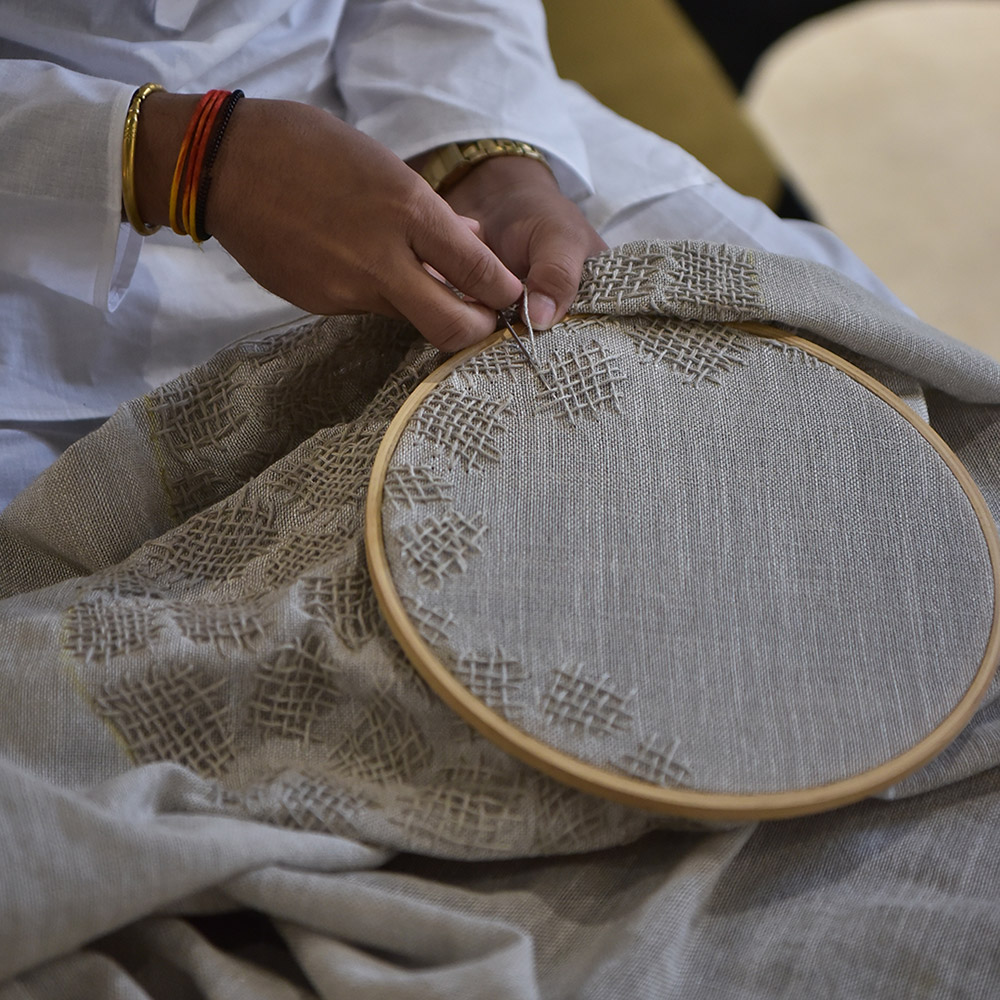
The fabric used is an easy, breathable linen, which can be used as a semi-sheer. It is a great choice for main curtains, too, if you are looking to uplift the natural beauty of generously sunlit rooms. The inherent nature of the stitch gives this sheer just the right thickness, adding to its functionality; making it perfect for upholstery accents. Stone-washing is the final step in the development of its organic, earthy aesthetic, highlighting the nuances of the hand-stitching even more.
Technique 4: A modern eclectic variation of the traditional Indian Kantha stitch, on a diaphanous fabric base
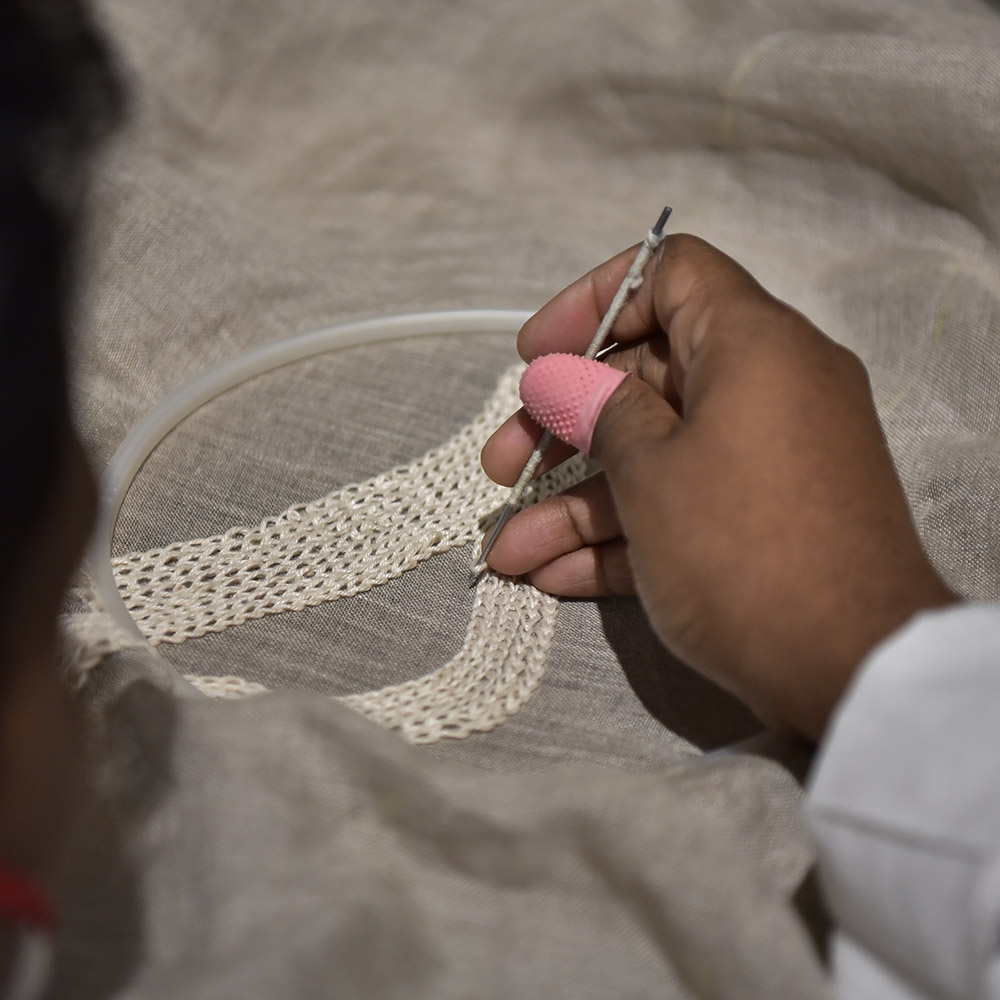
Kantha is an embroidery technique indigenous to West Bengal, and other Northeast Indian states. It is easily recognised by its running stitch patterns, and we’ve created a contemporary juxtaposition on this traditional rural craft method with a simple chain stitch. This part abstract-graphic, part botanical-inspired pattern has been hand-embroidered onto the fabric. The inherently sheer texture is accentuated by spontaneous plays of light, making it perfect for curtain drapes or fluid room dividers in the home of the modern surrealist or eternal romantic!


